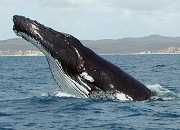 Three whale species, the humpback, minke and southern right, are recovering from the threat of extinction according to a new study released by the world’s largest conservation network. Thanks to curbs on hunts since the 1980s, the status of both the southern right and humpback population has been lowered from Vulnerable to Least Concern.
Three whale species, the humpback, minke and southern right, are recovering from the threat of extinction according to a new study released by the world’s largest conservation network. Thanks to curbs on hunts since the 1980s, the status of both the southern right and humpback population has been lowered from Vulnerable to Least Concern.
The blue whale, fin whale, and sei whale (Balaenoptera borealis) all remain listed as Endangered, pending more evidence of recovery.
With less whale hunting over the last few decades, accidental killing in fishing gear has become the main threat.
“Disentanglement programmes to release whales captured in fishing gear, already carried out in the United States, New Zealand and Australia, help some individuals survive,” says the Cetacean Specialist Group of the International Union for Conservation of Nature Species Survival Commission, which produced the new listing of assessments.
Climate change is also starting to affect whales. The distribution of many species is changing, with the potential for a cascade of effects such as exposure to new diseases, inter-species competition and changes in prey populations. The Antarctic great whales, for example, depend on krill for food. As water temperatures rise, krill populations may decline, leaving such whales short of food.
“To save whales for future generations, we need to work closely with the fishing industry, the military and offshore enterprises including shippers and oil developers – and we need to fight climate change,” says Julia Marton-Lefèvre, IUCN Director General.



















